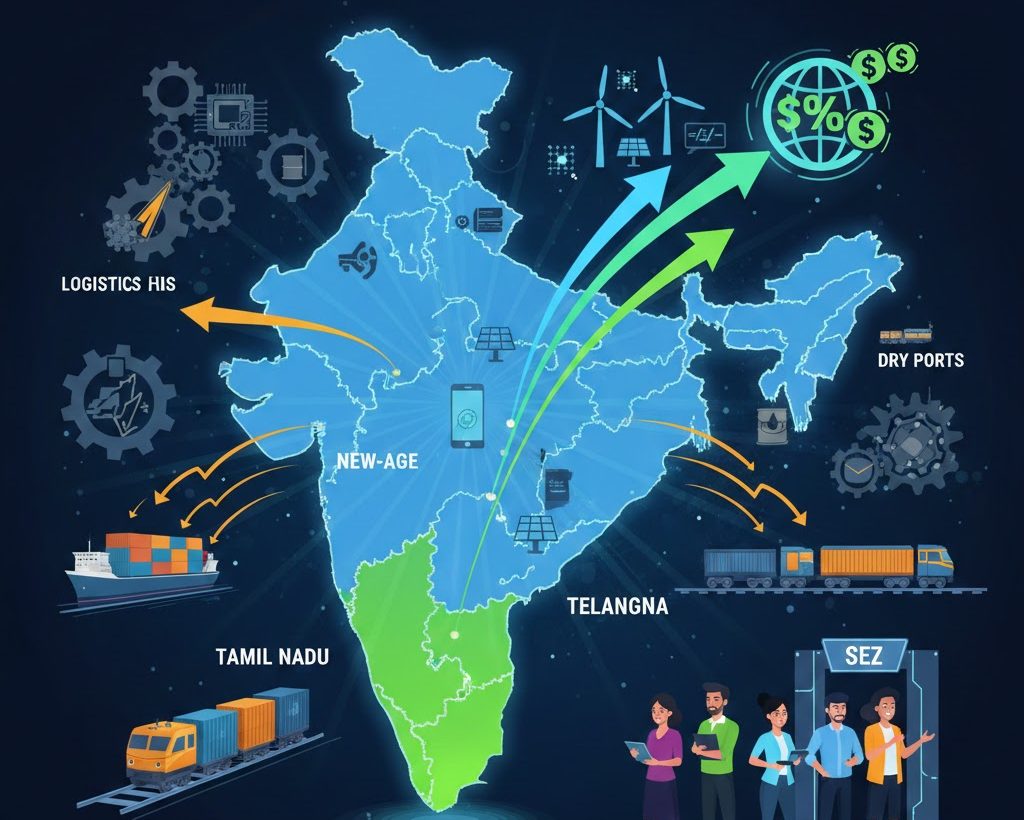Escalating Tensions in the South China Sea and India’s Expanding Role
This analysis of Sankalp Gurjar’s article, “Storms Brewing in East, South China Seas” (The Hindu, September 27, 2024), highlights the South China Sea as a crucial geopolitical hotspot with vital trade routes and rich resources, where China’s aggressive actions have escalated tensions, prompting strong responses from regional and global powers, including a more active role from India.
Introduction
The South China Sea has become a significant hotspot for regional tensions, with various countries asserting territorial claims over these resource-rich waters. China’s aggressive tactics, the importance of this area for global trade, and the presence of valuable natural resources like oil and gas have made the situation more complex. While countries like the Philippines, Vietnam, and Japan have historically been involved in these disputes, India has increasingly begun to play a more active role. This essay examines the growing tensions in the South China Sea, the regional responses, and the implications of India’s expanding involvement in the region.
Importance of the South China Sea
The South China Sea is one of the most crucial maritime regions globally, serving as a lifeline for international trade, energy security, and regional stability. The significance of this area can be outlined through four key factors:
- Global Trade: Nearly one-third of the world’s shipping passes through the South China Sea, connecting key economies like China, Japan, Southeast Asia, and beyond. Every year, around $5 trillion worth of goods, including oil, natural gas, food, and manufactured products, flow through these waters.
- Natural Resources: The South China Sea is rich in oil and natural gas reserves. According to the U.S. Energy Information Administration, the sea holds about 190 trillion cubic feet of natural gas and 11 billion barrels of oil in proven reserves. Beyond this, there are likely additional undiscovered resources, enhancing the area’s economic and strategic value.
- Fishing Grounds: The South China Sea is an essential fishing ground, supporting millions of people across Southeast Asia. The competition for access to these waters has been a significant source of tension among the countries that border it.
- Strategic Location: Situated at the heart of the Indo-Pacific, the South China Sea holds immense strategic value. Control over these waters would provide any nation with a significant military and political advantage, enhancing its influence across East and Southeast Asia.
Territorial Disputes and China’s Aggressive Tactics
Several countries claim parts of the South China Sea, including China, the Philippines, Vietnam, Malaysia, Brunei, and Taiwan. China’s claim, symbolized by the “Nine-Dash Line,” covers nearly the entire sea, overlapping with the exclusive economic zones (EEZs) of its neighbours. This claim is not supported by international law, as was made clear by the 2016 ruling from The Hague’s Permanent Court of Arbitration, which favoured the Philippines. However, China has rejected this ruling and continues to assert its dominance in the region.
China’s aggressive actions in the South China Sea have intensified regional tensions. These actions fall under what are often called “grey zone” tactics—aggressive manoeuvres short of outright war designed to alter the status quo:
- Artificial Islands: China has transformed several reefs and rocks into artificial islands, equipped with airstrips, military bases, and missile systems. These islands help China extend its military reach, establishing a permanent presence in the disputed waters.
- Harassment of Vessels: China’s coast guard and maritime militia frequently engage in aggressive tactics against vessels from other countries, particularly the Philippines and Vietnam. Incidents of ramming, water cannon attacks, and deliberate collisions have become increasingly common.
- Control Over Fishing and Oil Exploration: China restricts access to key fishing areas and oil exploration zones, blocking other nations from exploiting resources within their EEZs. Through the deployment of its coast guard, China asserts control over these vital economic areas, further escalating tensions.
- Military Presence: China has increased its naval power projection by deploying the world’s largest navy and conducting joint exercises with Russia to demonstrate its strength in the region.
Regional Responses to China’s Aggressiveness
China’s actions in the South China Sea have provoked significant reactions from neighboring countries, as well as from global powers like the United States, which has been drawn into the conflict to maintain freedom of navigation and uphold international law.
The Philippines has been a major actor in resisting China’s aggressive territorial claims. Under President Ferdinand Marcos Jr., the country has adopted a more assertive defence policy, upgrading its military capabilities, including the acquisition of BrahMos anti-ship missiles from India. The Philippines has also strengthened its military ties with the United States, allowing for increased U.S. presence and joint exercises.
Moreover, the Philippines has begun to use public diplomacy as a tool in the conflict, documenting Chinese aggression and sharing the footage with international audiences. By involving global media and releasing footage of confrontations, the Philippines is shaping the narrative to its advantage.
Vietnam, another major claimant in the South China Sea, has responded by increasing its military spending and enhancing its cooperation with countries like India, Japan, and the United States. Vietnam’s approach focuses on building stronger alliances and upgrading its naval capabilities to defend its claims.
Japan has also shown growing concern about China’s expanding influence in the South China Sea, despite not being a direct claimant. Tokyo has significantly increased its defence budget, aiming to double its defence expenditure by 2027. Japan’s strategic partnerships with the Philippines and other regional players are a direct response to China’s increasing belligerence in the region.
India’s Expanding Role in the South China Sea
India’s involvement in the South China Sea disputes marks a significant shift in its foreign policy. Traditionally neutral on these issues, India has now adopted a more assertive stance as part of its broader “Act East” policy, which aims to deepen economic and security ties with Southeast Asia.
India’s shift away from neutrality has been noticeable in its growing support for nations like the Philippines and Vietnam, which have territorial disputes with China. India’s stance is driven by its strategic interests, such as ensuring freedom of navigation and protecting trade routes.
India has increased its naval presence in the region, conducting joint exercises with ASEAN nations and other powers like the U.S. These military engagements are part of India’s strategy to strengthen its alliances with countries opposing China’s territorial claims. Additionally, India is a strong supporter of the United Nations Convention on the Law of the Sea (UNCLOS), which provides the legal framework for resolving maritime disputes. India has backed the 2016 arbitration ruling favouring the Philippines, further solidifying its opposition to China’s expansive claims.
India-China Relations and Strategic Implications
India’s growing role in the South China Sea has added complexity to its already strained relationship with China. The two nations have long been at odds over border disputes in the Himalayas, and India’s involvement in the South China Sea has only heightened tensions.
China views India’s increasing involvement in the South China Sea as an encroachment on its sphere of influence, contributing to further deterioration in bilateral relations. India’s involvement also provides it with leverage over China in their broader geopolitical competition. By supporting Southeast Asian nations, India is exerting pressure on China on multiple fronts.
The rivalry between the two nations could have significant economic implications, given the extensive trade ties between them. However, the growing military presence of both nations in the region also increases the risk of a direct confrontation. A miscalculation in the South China Sea could escalate into a broader conflict.
Global Implications
The tensions in the South China Sea are not confined to the region. As one of the busiest maritime trade routes in the world, any disruption in the South China Sea would have significant consequences for global trade, energy security, and geopolitical stability.
The South China Sea is critical to global commerce, and any conflict in the region could disrupt shipping routes, increase transportation costs, and delay the delivery of goods. Such disruptions would affect not only regional economies but also the global supply chain.
Many nations rely on the South China Sea for energy imports. In 2023, approximately 10 billion barrels of petroleum and 6.7 trillion cubic feet of liquefied natural gas passed through these waters. Any conflict could severely disrupt global energy markets, driving up prices and affecting economies worldwide.
Role of Major Powers
The South China Sea has become an area of great concern for global powers like the United States, which is committed to keeping the sea open for everyone to use. This is known as defending “freedom of navigation.” The U.S. believes that no single country should control such an important waterway, especially one as vital as the South China Sea, where so much of the world’s trade passes through. To show its dedication, the U.S. regularly sends its navy ships through the area to make sure the waters remain open to all.
In addition to its own efforts, the U.S. has joined forces with other powerful nations like Japan and South Korea. These three countries have been working together to counterbalance China’s growing control in the region. They have strengthened their cooperation by conducting joint military exercises, which means their armies, navies, and air forces practice together to improve their ability to work as a team. This cooperation is important because it shows that these nations are united in their stance against China’s efforts to expand its territory in the South China Sea. Together, the U.S., Japan, and South Korea have made it clear that they oppose China’s actions, especially when China tries to change things in the region without the agreement of other countries. This is often called “unilateral action,” meaning China is acting on its own without considering the rights of other nations.
However, there are still some worries about how long the United States will continue to play this strong role in the region. These concerns arise because of uncertainties in the U.S.’s own domestic politics. Sometimes, changes in leadership or political priorities within the U.S. can lead to shifts in its foreign policy. Some countries wonder if the U.S. will always be as committed to protecting the South China Sea in the future as it is today. This uncertainty makes it harder for countries like Japan and South Korea to fully rely on the U.S. because they don’t know if future American governments will continue to provide the same level of support. For now, though, the U.S. remains a key player in ensuring that the South China Sea stays open and free for all nations to use.
Conclusion
The South China Sea remains a pivotal flashpoint, with China’s aggressive actions prompting strong responses from regional players like the Philippines, Vietnam, and Japan. These countries have bolstered their defences and forged closer ties with global powers such as the United States, which continues to play a critical role in maintaining freedom of navigation. However, uncertainties in U.S. domestic politics raise concerns about the longevity of its commitment.
India’s growing involvement marks a significant shift, aligning its strategic interests with Southeast Asian nations while counterbalancing China’s influence. Though India’s engagement strengthens regional alliances and supports international law, it also escalates tensions with China. As the South China Sea remains a contested arena, the future stability of the region will rely on careful diplomacy and sustained cooperation among both regional and global powers to prevent conflict and maintain open, shared waters.



